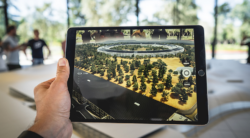
Metaverse Revisited: Interview with Dr. Fabrizio Palmas on XR, AI and the Future of Edtech
In 2021, the term “metaverse” entered the mainstream when Facebook rebranded to Meta. Three years later, the initial excitement may have faded, but the metaverse is steadily becoming a reality, thanks to ongoing technological advancements and creative business concepts. To get an insider’s perspective, we spoke with Dr. Fabrizio Palmas of Straightlabs, a leading edtech company based in Munich, Germany. He shared insights on the metaverse’s current state and its future direction, highlighting the potential to transform how we learn and connect.
Trilligent: The hype around the metaverse has calmed down significantly. This might be provocative, but many people are asking if it is still relevant as a concept. Do you think it needs a rebrand like some big tech companies are attempting?
Dr. Palmas: The cooling of the initial hype around the metaverse does not diminish its relevance; rather, it signals a shift from speculative excitement to practical application. While the rebranding efforts aim to refresh their respective narratives in technology, for the metaverse itself, a rebrand isn’t necessarily about changing its name but refining its value proposition. It’s crucial to emphasize real-world applications and benefits that resonate with users and industries.
Trilligent: With its rise over the past 18 months, artificial intelligence (AI) has overtaken the metaverse as the “big thing” in tech. Will this continue to be a long-term trend? Or will we see a comeback of the metaverse?
Dr. Palmas: AI’s ascension as the forefront of tech innovation does overshadow the metaverse to some extent in the short term. However, these aren’t mutually exclusive realms. AI’s growth fuels the development of more sophisticated and user-friendly metaverse environments. The synergy between AI and extended reality (XR) technologies is likely to bring about innovative applications that could see the metaverse regain some of its spotlight as a transformative platform. We can consider AI as a core technology for the metaverse, but it’s often working more in the background of metaverse development, making the connection between these two technologies not always clear.
Trilligent: There have been some technological developments over the past year that have propelled virtual reality (VR) and XR forward. Two of the biggest headset producers released new XR glasses that possess impressive hardware and software features. Looking into the near future, what do you think is the next “big thing” in XR?
Dr. Palmas: With the latest releases and existing headsets XR hardware is achieving new heights in performance and accessibility. The next big development in XR will likely focus on the integration and interoperability of systems—making XR seamlessly blend into daily activities through various devices. Some examples would be virtual and mixed reality headsets, smart glasses, and eventually in the future. XR contact lenses. These advancements will aim for minimal obtrusiveness while providing maximal utility, pushing the boundaries of XR in everyday life.
Trilligent: Building on the previous question: what is the next “big thing” in your field—immersive learning and education technology?
Dr. Palmas: The next big thing in immersive learning is adaptive environments that use AI to tailor educational experiences to individual needs. These technologies can dynamically adjust content and pace based on real-time feedback from learners, thereby maximizing engagement and efficacy. For example, our personal assistant offers customers a way of learning with a virtual human by your side that is available to help 24/7. Additionally, integrating biometric sensors to assess a learner’s emotional and cognitive state could significantly enhance personalized learning.
Trilligent: Speaking of your field: Both the VR Speech Trainer and XR Assistant that you offer also rely heavily on AI. What are your main challenges in working with AI as a company that is routed in XR?
Dr. Palmas: As a company at the intersection of AI and XR, one major challenge is balancing the computational demands of AI with the hardware limitations of current XR devices. Optimizing AI algorithms for real-time processing without compromising user experience is a critical focus. A stable, fast internet connection and accessible servers that handle the computational part of AI are solutions to this problem—and yet maintaining a stable connection is already challenging enough in many companies! Another challenge is data privacy and security, especially when dealing with personalized learning systems that handle sensitive user data. Ensuring compliance with data protection regulations while innovating in AI and XR is a continuous challenge that requires innovative solutions.
Trilligent: Thank you for your time and these fascinating insights!




